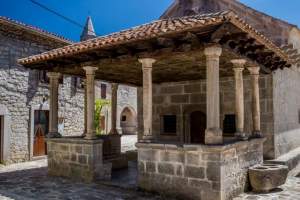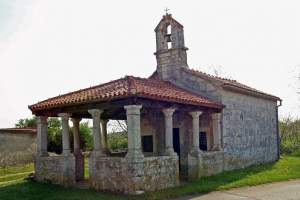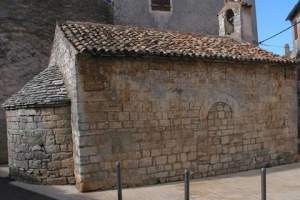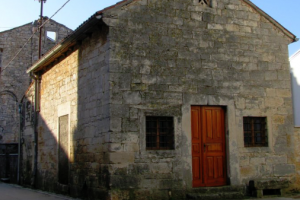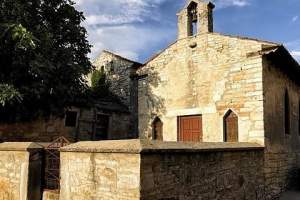Parish Church of St Martin
The town wall with Romanesque gate were once passing througt the place where the parish church is standing nowadays. The history of its building is very long. The foundations were laid at the dawn of the 19th century (1804). During the French occupation (1805 – 1813) building was contuined, but then came a long pause. Between the years 1927 and 1935 (at the time when the patrish priest Josip Martinol was holding the offise) the construction was brought to the end. Accompanied by religious celebrations, the church was consecrated on March 19th, 1935 by the Poreč Bishop Trifun Pederzolli (Latin text in the church) in front of the church there is a flight of stairs.
Facade is completed by a triangle gable. On the portal there is the Lati text: VERE LOCUS ISTE SANCTUS EST (The place is really sacred). The other Latin text on the facade speaks of the history of church building. In it the pope Pio XI, the Italian king Vittorio Emanuel and the bishop Trifun Pederzolli are mentioned.The construction of the a bell tower, planned at that time, was realiseed not earlier than in 1991.
The interior consists of three naves, divided by four pillars on each side. On the pillars the donators' names are engraved. The capitals are decorated eith floral ornaments (palms and volutes). In the presbytery there are two arches covered with religious pictures, which were painted in 1946 by Antonio Macchi from Rovinj-Rovigno qccording to instructions of the priest Francesco da piran. Pictures on the first arch represet scenes from the lives of St. Martin and St. Fosca. In the left corner St. Martin is cutting a soldier's coat with his sward and giving it to the frozen beggar. In the right corner martyrdom of St. Fosca, a Cristian woman martyr is shown. In the middle of the arch there is an image of the Crist with outstretched hands. The image is completed by the Latin text: SANCTI NOSTRI MARTINE ET FVSCA INTERCEDITE PRO NOBIS (Our saint protectors, Martin and Fosca, pray for us). The other arch is painted with floral motifs (flowers and trees), angels and sheep. In the central part there is the symbol of the Crist – Agnus Dei (God's lamb). The Latin text goes:
ACCE AGNUS DEI: ECCE QUI TOLLIT PECCATA MUNDI (Here is the God's lamb, that takes over the sins of the world). The artistic inventory of the church is quite poor. The marble baptistery in the left nave wasbrought from the old church of St. Martin (which was located on the main square, in the very centre of the town). It is a great pity that the wooden Gothic Madonna statue dating from the 14th century was slolen from the church. Beforehand it had been kept in the aromanesque basilica of St. Mary situated in the Harbour. Next to the church of St. Martin there is a parish house built in 1935.












